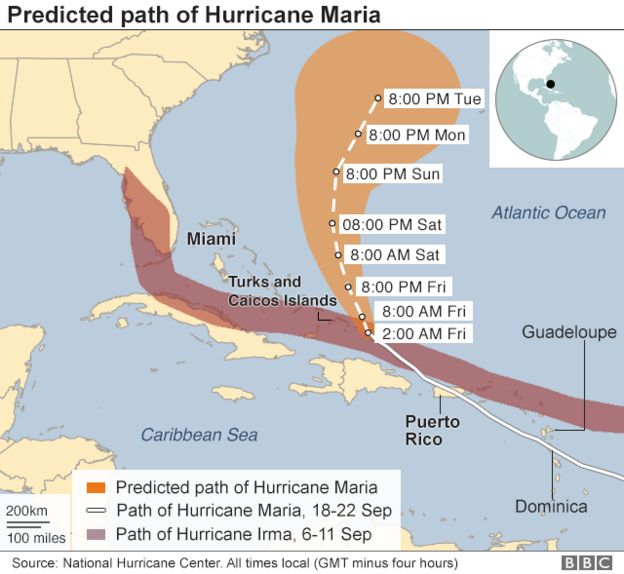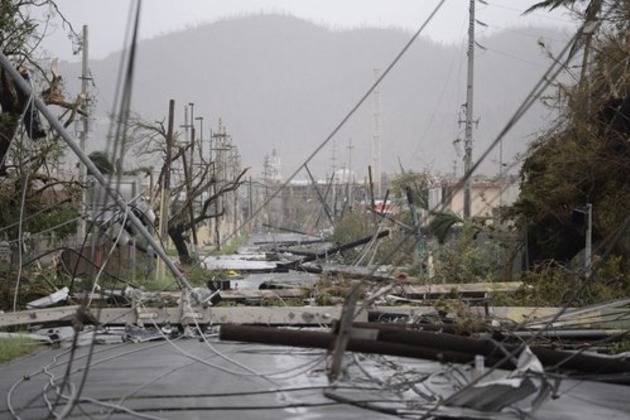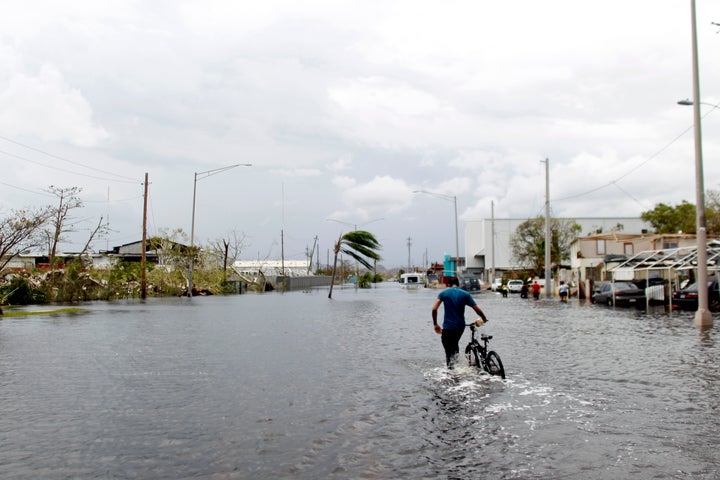Dam about to burst in Puerto Rico after Hurricane Maria...

Puerto Rico dam failure 'imminent' after Hurricane Maria
22 Sept.`17 - A failing dam is causing "extremely dangerous" flooding on a Puerto Rico river in the wake of Hurricane Maria, authorities say. The National Weather Service (NWS) said the "imminent failure" of the Guajataca Dam is a "life-threatening situation".
See also:
Failing dam poses new crisis on Puerto Rico amid flooding from Hurricane Maria
23 Sept.`17 - Emergency officials in Puerto Rico raced on Saturday to evacuate tens of thousands of people from a river valley below a dam in the island’s northwest on the verge of collapse under the weight of flooding in the aftermath of Hurricane Maria.

Puerto Rico dam failure 'imminent' after Hurricane Maria
22 Sept.`17 - A failing dam is causing "extremely dangerous" flooding on a Puerto Rico river in the wake of Hurricane Maria, authorities say. The National Weather Service (NWS) said the "imminent failure" of the Guajataca Dam is a "life-threatening situation".
More than 70,000 people live in the nearby areas of Isabela and Quebradillas. At least 13 people have died since Maria ripped through Puerto Rico, knocking out power to the whole island. Operators of the Guajataca Dam said the structure, at the northern end of Lake Guajataca in northwest Puerto Rico, began to show signs of failing at 14:10 local time (18:10 GMT). It sparked a flash flood emergency for Isabela and Quebradillas municipalities, the NWS said in a series of tweets. The agency urged residents in the area to "move to higher ground now" in an alert posted on its website. Many who live near the dam are being evacuated by buses.

A 3D render from Google earth showing Guajataca dam. Inset, top right, is map of Puerto Rico showing the considerable distance from San Juan to the region - almost on opposite sides of the country
It is expected to head to the northeast and east of the Bahamas over the weekend, forecasters say. Puerto Rico's governor has called Maria the worst hurricane in a century. Ricardo Rossello says it could take months to restore electricity to all 3.4 million of the US island territory's residents. Roofs were ripped off as 140mph (225km/h) winds battered Puerto Rico's capital city, San Juan. The hurricane has claimed more than 30 lives across the region, and is the second devastating storm to hit the Caribbean this hurricane season.

The first was category five Irma earlier in September. Maria also caused widespread destruction on the small island of Dominica when it hit on Monday night, leaving at least 15 dead and 20 missing. US President Donald Trump has pledged to visit Puerto Rico, saying it was "totally obliterated" by the storm. He has yet to declare the island a disaster area, but has made federal emergency aid available.
Failing Puerto Rico dam sparks evacuation
See also:
Failing dam poses new crisis on Puerto Rico amid flooding from Hurricane Maria
23 Sept.`17 - Emergency officials in Puerto Rico raced on Saturday to evacuate tens of thousands of people from a river valley below a dam in the island’s northwest on the verge of collapse under the weight of flooding in the aftermath of Hurricane Maria.
The potential calamity was unfolding even as Puerto Ricans struggled without electricity to clean up and dig out from devastation left days earlier by Maria, which has killed at least 25 people across the Caribbean, according to officials and media reports. Some 70,000 people live in a cluster of communities under evacuation downstream from the earthen dam on the rain-swollen Guajataca River, Puerto Rico Governor Ricardo Rossello said in a late-afternoon news conference on Friday. Residents of the area were being ferried to higher ground in buses, according to bulletins issued by the National Weather Service from its office in San Juan, the capital of the U.S. island territory.
Christina Villalba, an official for the island’s emergency management agency, said there was little doubt the dam was about to break. “It could be tonight, it could be tomorrow, it could be in the next few days, but it’s very likely it will be soon,” she told Reuters by telephone on Friday night. She said authorities aimed to complete evacuations within hours. Governor Ricardo Rossello went to the municipality of Isabela on Friday night and told mayor Carlos Delgado that an evacuation there was urgent, his office said in a statement. Rossello said the rains sparked by Maria had cracked the dam and could cause fatal flooding.
Puerto Rico’s national guard had been mobilized to help the police evacuate all necessary areas, Rossello said. People had begun leaving nearby areas, but one small community was refusing and Rossello instructed the police to step in under a law that mandated them to remove the local population in an emergency, the statement said. Villalba could not say how many people had already been evacuated, or how authorities were communicating with residents to organize the evacuation.
PATH OF DESTRUCTION










